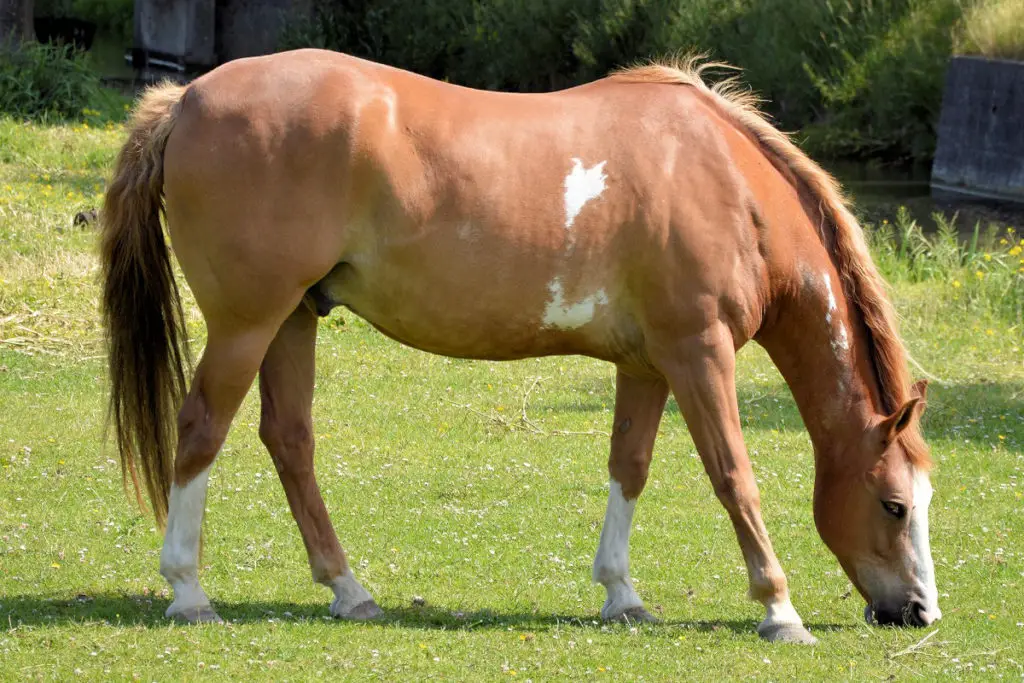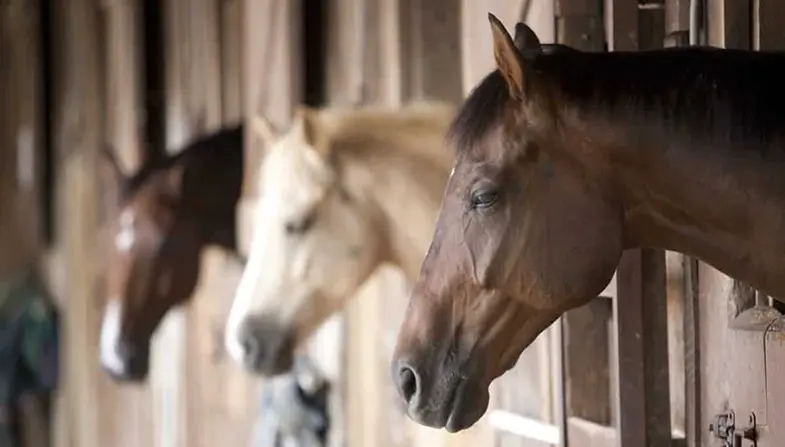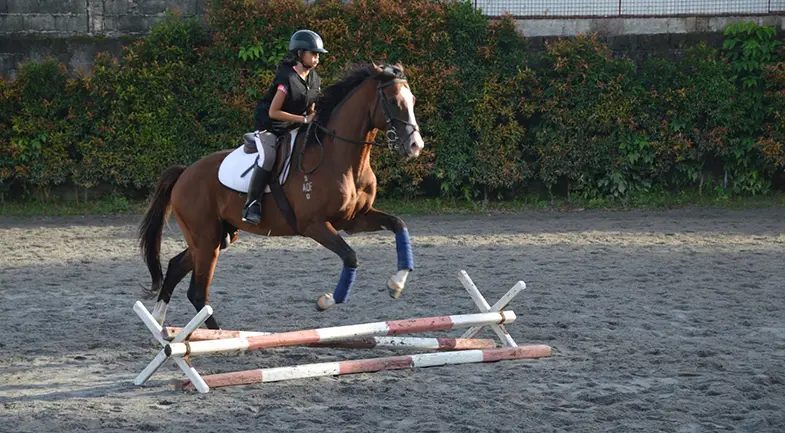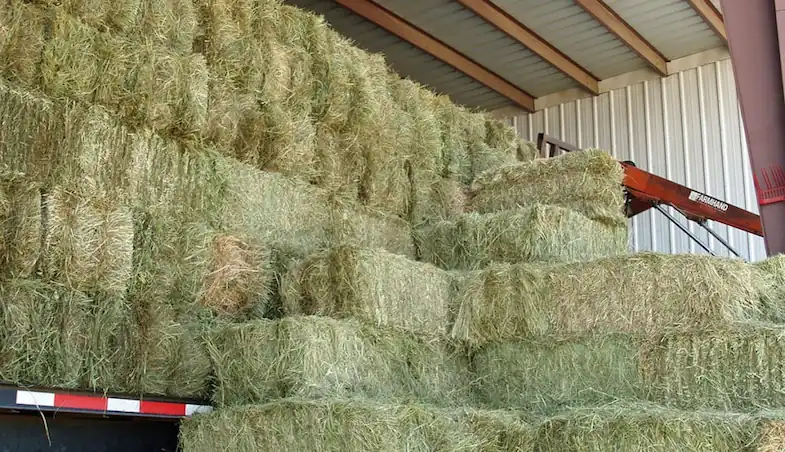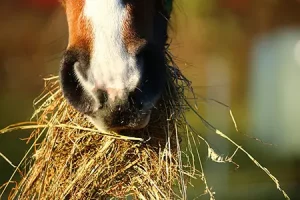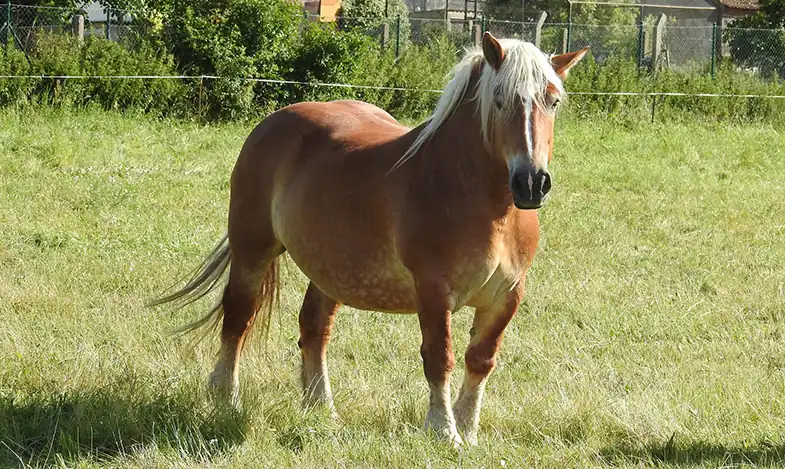We all know that owning a horse is expensive and while you may have fully budgeted for your beloved horse ten years ago a lot can change in that time. The cost of feed, bedding, and boarding can go up but if your salary isn’t going up too this can be a problem. Then of course there are other unforeseen changes in circumstances such as pregnancy, redundancy, or sadly even divorce.
Circumstances can change at any time and it can be devastating if the change means you can no longer afford to keep your horse, but before you commit to selling or rehoming them there are a few things you can do to reduce the cost of ownership, or if not at least share the costs.
Below are some creative ways to help you reduce the cost of owning a horse.
Reducing the cost of your horse’s board
Ranging from anything from $150 for DIY board to $2000 for full board, the cost of boarding a horse is normally the single biggest cost most owners face but the good news is that there are things you can do to reduce this, sometimes quite significantly.
Work off the cost of board
If you’re finding it hard to meet the cost of boarding your horse every month then ask the yard owner if you can work off some of the costs. Many owners will welcome the extra pair of hands and you’ll also be able to drastically reduce the boarding fees.
This option isn’t for everybody, especially if you don’t have the time to spare, but typical tasks would include mucking out stalls, feeding horses, turning them out/bringing them in, and sometimes even exercising.
Change the type of board
Ask yourself if the type of board your horse has really necessary and consider stepping down a level or two if it isn’t.
If your horse is on full board and you have a bit of spare time why not consider reducing it to partial or self-care? Both would allow you to keep your horse stalled but won’t involve all of the extras such as turning out, grooming, and sometimes exercising.
Evidence shows that many horses may be happier if they’re kept on pasture board so it’s worth asking if this option is available at the yard.
Consider changing boarding yards
You may love the yard where you keep your horse but are you paying more than you need to? I’m not suggesting that you should move your horse to the cheapest yard you can find but instead consider whether or not you really need (or use) all of the added features at your current barn.
While a floodlit outdoor arena or heated indoor area may be nice to have, but how often do you really use them? If the answer is not that often then you can save a small fortune by moving to a yard without some of those features.
Moving yards can be stressful for both you and your horse which is why I put together a helpful guide to making sure you find the right yard (for both of you), first time.
Change your horse’s bedding
The price of bedding can change throughout the year but as a general rule wood flakes will always be the most expensive while flax and straw will usually be the cheapest which is why making this small change can lead to a massive saving.
While the initial cost will be high, installing rubber mats under your horse’s bedding will lead to a big saving long term. This is because the mats will act as a cushion, meaning you don’t need as much bedding as you would if you didn’t have mats.
Allow your horse to be used in lessons
This isn’t for everybody, nor is it for every horse (especially if they’re difficult to ride or not very tolerant of new or inexperienced riders), but if your boarding yard offers lessons or has a resident instructor then allowing them to use your horse will help to lower the boarding costs.
Sometimes known as working board it’ll be a win-win situation for everybody, your horse will get regular exercise, the instructor will benefit from having another horse to use and you’ll be able to reduce your boarding fees.
Put your horse on half lease
It can be difficult to let somebody else look after and ride your horse (especially if you don’t know them) but offering your horse on half lease could mean that you not only get to keep your horse but the monthly costs will be split with somebody else, often halving them.
If you’re worried about letting the wrong person look after your horse don’t, as the owner you’ll be able to vet every potential lessor. You’ll also have the final say on who you’ll share your horse with and on top of that your horse will stay where he is so you can check up on him at any time.
If you do decide to put your horse on half lease then make sure you have a proper contract drawn up beforehand. This should clearly set out everybody’s responsibilities as well as address the issue of liability.
Keep your horse at home
If you have enough space to keep your horse at home (or at a friend’s home) then doing so will save you anywhere from $150 to $2000 (depending on your boarding costs) a month. You’ll still have to pay for feed, bedding, fencing, water, etc but you won’t have the expense of ‘renting’ a stall or pasture.
Reducing the cost of feeding your horse
We tend to think that the cost of feeding a horse is non-negotiable but there are a few small changes that you can make that will reduce your monthly feed bills, sometimes quite considerably.
Buy your hay direct from the farmer
Some boarding yards will buy hay in bulk and then charge each owner a nominal amount for it but if your yard doesn’t do this and you live near to a farm (or at least within traveling distance) then buying the hay directly from the farmer will save you a lot of money. Some farmers will even deliver it to you while others may allow you to buy it in bulk (saving even more money) and will store it for you.
Buy hay during the summer
If you have enough space to store hay (and straw if you use it) then buying your winter supply in the summer will mean you’ll have plenty for the winter but that you won’t have to pay the higher winter prices.
This is because during the summer most crops (such as hay, straw, flax, etc) are grown and are plentiful, but during the winter there is less hay but more people want it too. This means that the cost in winter can increase by anything up to 75% so you can see how much you could save.
Mix your own food
Whether we like to admit it or not we’re all guilty of spending more money for convenience and horse food is no different. Feeding your horse ready mixed concentrates is by far the most expensive way of feeding them, but not only that you don’t have so much control over what they’re eating.
Mixing your horse’s feed yourself will save you money, but you’ll also be able to pick exactly what your horse eats and can tailor his diet to meet his specific needs.
Measure your horse’s feed
If you feed your horse by eye or volume you may well be feeding him more than he needs and therefore spending more money than necessary. If you weigh out his feed as you’re mixing it you’ll not only save yourself money but will also know that he’s getting exactly the right amount of food.
Weigh your horse regularly
Using a weigh tape to record your horse’s weight every other week will help you to feed them exactly what they need, no more and no less.
This might mean that one time you’re feeding them more while the next time you’re feeding them less but this way you know your horse is getting EXACTLY what he needs.
Feed your horse more forage and less concentrate
Horses need far less concentrate than we often think, even a horse on a heavy workload will only need around 3% of his body weight in concentrate. By increasing the forage (and decreasing the concentrate) you give, your horse will still be getting enough to eat but it’ll cost you a lot less, even if you feed him the highest grade hay.
You should also speak to your vet or equine nutritionist to ask what additional supplements, if any, your horse needs.
Reducing other horse ownership costs
On top of reducing your board and feeding costs, there are a number of other changes that can be made, saving you even more money.
Consider going barefooted
If your horse is shod speak then your farrier about whether or not they really do need to wear shoes. You will still need to have his feet trimmed regularly but going barefoot (even for part of the year) could save you a small fortune every year. When you consider that a set of new shoes could cost anything from $80 to $200 (depending on if they have two or four shoes) and that they need to be replaced every 4 to 6 weeks you can easily see just how much you can save.
Only buy what you really need
It’s so easy to give in to the marketing hype (I know I’m often guilty of this) but ask yourself if your horse really does need the latest and shiniest halter or the all singing all dancing shampoo? Chances are he doesn’t, so don’t buy it.
Horses generally have simple needs and don’t care what color something is, whether it matches or if it sparkles so remember this next time you find yourself at the tack shop.
Learn basic first aid techniques
I’m not suggesting you enroll in a full-blown veterinary course but learning a few basic medical skills can help to save on some unforeseen bills. For example, if your horse cuts himself you’ll be able to treat the wound yourself instead of having to call on your vet’s services, likewise if you can administer drugs yourself you won’t have to pay your vet to do it..
Budget stores are much cheaper than tack shops
When you need to replace your sponges, clothes or other items don’t necessarily buy them from your tack shop, instead, buying them from your local budget or household store can save you a not-so-small fortune. While it’s not true for everything a lot of ‘horsey’ items cost more than household ones.
For a more thorough list of what household items can save you money check out this article, I wrote recently.
Keep a record of your spending
I admit this won’t save you money but it will help you to know exactly what everything costs and what you really do and don’t need, therefore allowing you to budget better and make even more savings.
You can buy expense record books in most stationers or you can sign up for the Horse Factbook newsletter and download our FREE horse record kit. As an added bonus you’ll also receive regular updates, money-saving tips, and horse care advice direct from the Horse Factbook stable.
Costs that horse owners should NEVER reduce
When you’re trying to save money it can be tempting to think that your horse is okay now so can go without insurance, or that you won’t be traveling so you can skip vaccines this year but thinking like this is wrong. It’s important to remember that, no matter how tight your budget is, a horse is still a living creature that you have chosen to take care of and look after. It’s therefore your responsibility to make sure your horse’s health is looked after and that they have what they need. This means that there are some costs that should never be cut, no matter what, cost such as:
- Veterinary care – You may be able to carry out some basic first aid on your horse but there’s no substitute for professional veterinary care when your horse needs it.
- Vaccinations – Horses can be vaccinated against a number of conditions such as equine influenza and rabies and you should always keep these up to date.
- Hoof care – Regardless of whether or not your horse has shoes his feet will still need to be trimmed every six to eight weeks.
- Deworming – You might not need to deworm your horse every time but having a fecal count done twice a year will help you to better target any worms that he does have.
- Dental care – Even if your horse’s teeth appear to be perfectly okay you should have them checked regularly. This will help to keep them in good condition but will also mean any problems are discovered early.
- Insurance – In most states insurance isn’t compulsory but in my mind it is essential. It might cost you a few hundred dollars a year but if something happens to your horse it could save you thousands.
What should you do if you still can’t afford to keep your horse.
If you’ve done everything you can to save as much money as you can but still don’t have enough to keep your horse then, while I know it’s difficult now is the time to consider selling or rehoming your horse. You might think it’s better to wait and leave it until the last minute but doing so means you may not have the time to choose where he goes.
The sooner you try and find a new home for your horse the better it’ll be for your peace of mind but also for your horse’s happiness.
If you really have to sell your horse then you should read this article before creating an advert. It talks about what to include in an advert, how to take a good photograph (and video) as well as how to make sure your horse is going to the right home.
Further reading
- How much should your horse weigh?
- Feeding a hard keeper on a budget
- Feeding a horse without a pasture
- Healthy homemade horse treats
- How coconut oil can help your horse
- Alternative horse companions
I hope you found this article helpful. If you did I’d be grateful if you could share it please as it would really help me.
Recommended products
Over the years I have tried hundreds of different horsey products, from various blankets and halters to different treats. Some I’ve loved, others I’ve hated but I thought I’d share with you my top all-time favorite products, the ones I never leave the yard without. I’ve included links to the products (which are in no particular order) that I really think are great.
- Horse Knots by Reference Ready – If you’re like me and enjoy pocket reference guides then you’ll love this knot tying guide. These handy cards can easily fit in your pocket or attach to the saddle for quick reference. They’re waterproof, durable and are color coded to make them easy to follow.
- Mane ’n Tail Detangler – Even if you never show your horse you’ll need to detangle his tail from time to time (and possibly his mane too) which is always a challenging chore! I’ve found that if I run a little bit of detangler through my horse’s tails every few days it stops them from getting matted up and makes combing them easy, even if they’re coated in mud. I don’t know if I should admit to this or not but it also works wonders on my hair.
- TAKEKIT Pro clippers – Over the years I’ve tried a lot of different clippers and while some were obviously better than others I found these to be by far the best. They are heavier than a lot of other clippers but for me, that’s a good thing, it makes them feel more sturdy and hardwearing. On top of that they have a range of speeds so are just as good for clipping your horse’s back as they are his face. I also like the fact that they come in a handy carry case but that’s not for everybody. The company that makes them is super good and incredibly helpful too, a real bonus these days. The only thing I wasn’t keen on was the fact that it doesn’t come with any oil, but that’s not a major problem as it’s not difficult to buy lubricant.
- Shire’s ball feeder – There are so many boredom buster toys out there but I like to use these every day, regardless of whether or not my horses are bored. I find that it helps to encourage my horses to problem solve by rewarding them with treats (or pieces of fruit) but it also mimics their natural grazing behavior which helps to keep them calm and de-stressed.
- Horse safe mirror – This is a strange one that many people are surprised about but I like to put horse safe mirrors in the trailers as well as in the quarantine stalls. It helps to prevent the feeling of isolation by giving the impression of other horses being around. Being herd animals horses can get extremely stressed when they feel that they’re on their own but with these stick-on mirrors, they believe that at least one other horse is with them.
- Rectal thermometer – I know this isn’t glamourous at all but it’s vital for your horse’s well-being to be able to check their temperature and a rectal thermometer is the easiest way of doing this which is why I’ve added it to the list.
Shopping lists
I’ve also put together a few shopping lists of essential items that I’ve found helpful over the years. I’ve broken the lists down into different categories rather than put everything in one massive list 😉

